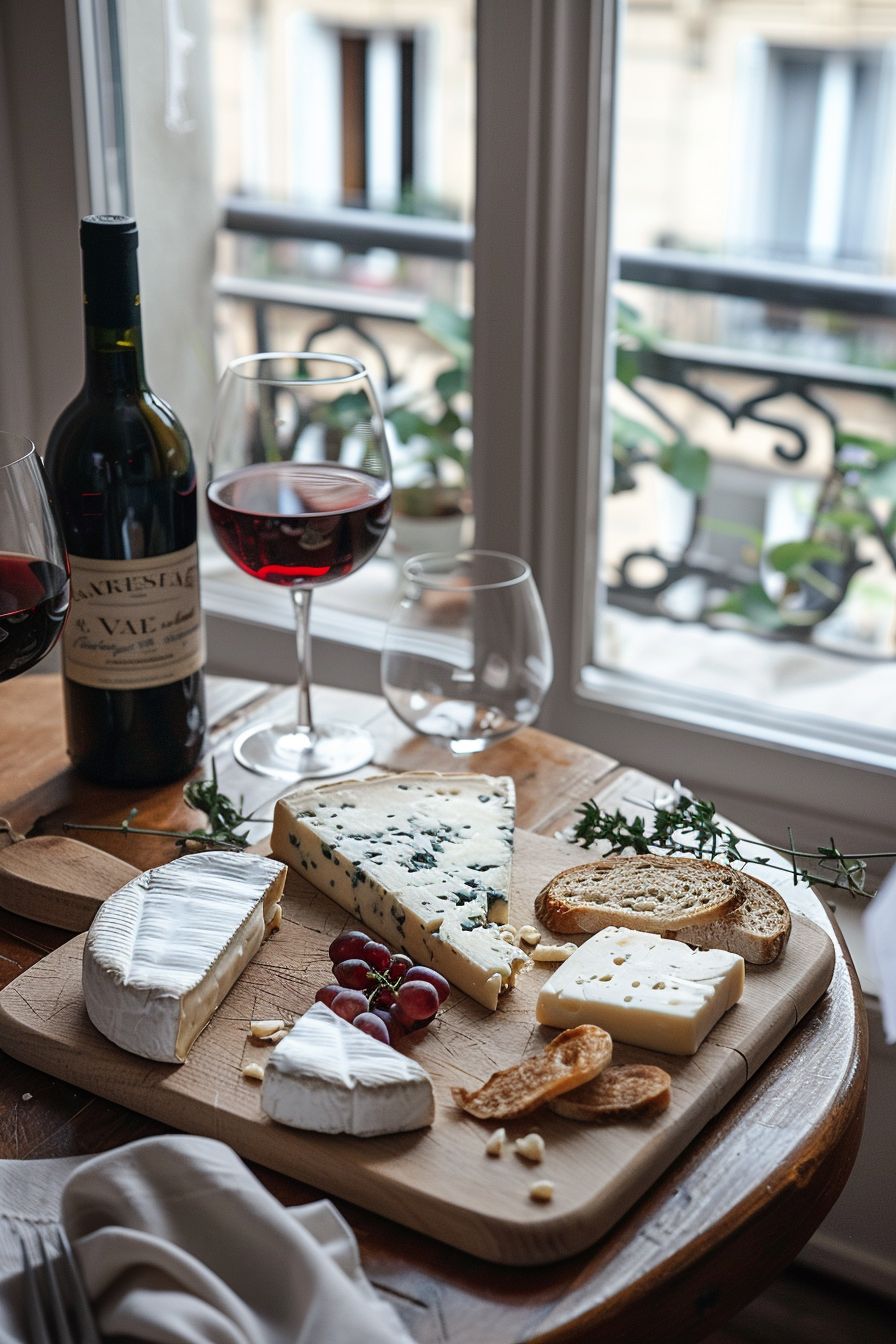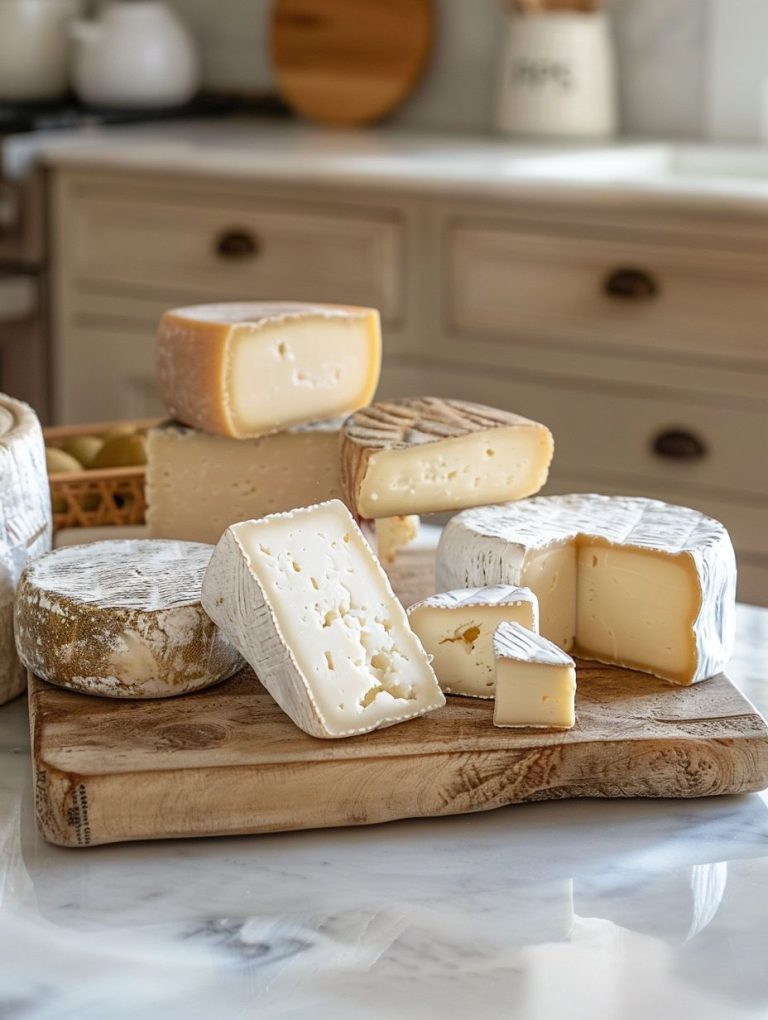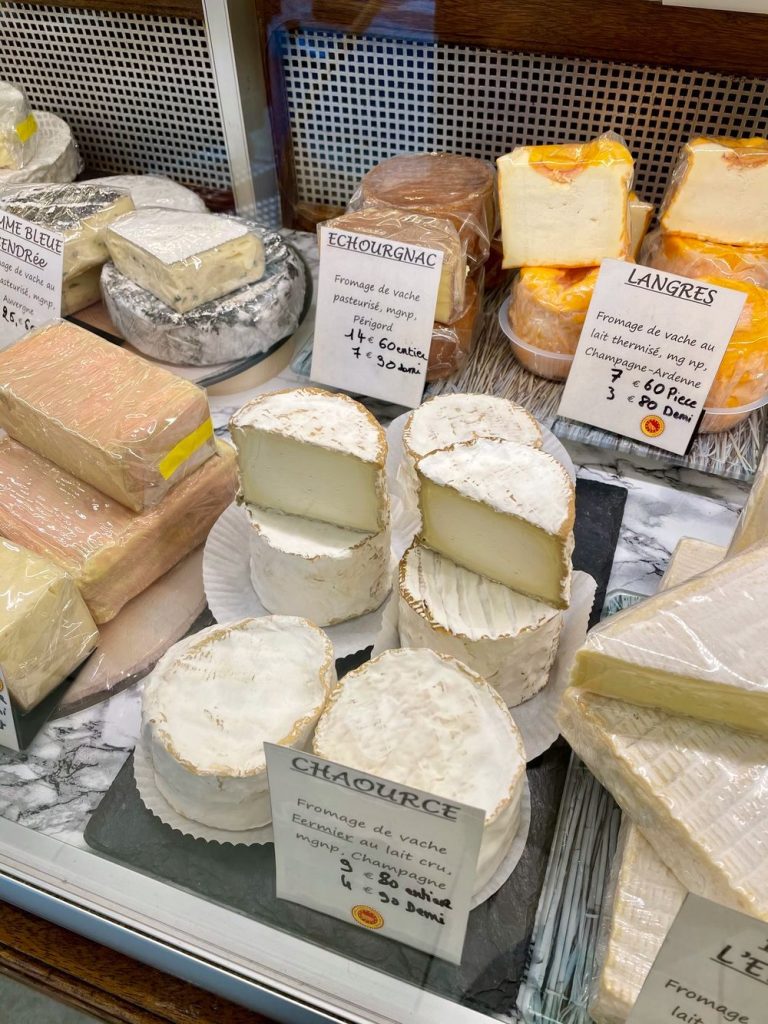5 Ways to Cook, Serve, and Eat Cheese like the French
We may earn a commission through all links on this website. As an Amazon Associate, we earn from qualifying purchases.Cheese is an essential part of French meal culture, and there are certain customs and traditions associated with how it is cooked with, served, and consumed. Most people know that the French way to serve cheese typically involves bread. Here are some additional ways cheese is typically enjoyed in France!

Cheese Course
In France, cheese is traditionally served after the main course and before or in place of dessert. This cheese course, known as “le plateau de fromage,” typically consists of an assortment of cheeses, and guests can choose which ones they would like to try. A variety of textures and flavors are usually represented, from soft and creamy cheeses to hard and pungent ones.
Cheese and Bread
Cheese is often eaten with a slice of French bread or a baguette. Instead of spreading the cheese on the bread, the French often place a slice of cheese on top of a piece of bread.
Serve it at Room Temperature
Cheese is often served at room temperature in France, as this helps to bring out the full flavors of the cheese. It’s customary to take the cheese out of the refrigerator about an hour before it is to be served to allow it to come to room temperature.
Pairing Cheese and Wine
Cheese is commonly paired with wine in France. There’s a lot of regional pride in pairing local cheeses with local wines, but some general guidelines include pairing hard cheeses with full-bodied red wines, soft cheeses with light red or white wines, and blue cheeses with sweet wines.
The art of pairing cheese with wine is rooted in understanding and balancing the flavors and intensity of both. As a general rule, the intensity of the cheese should match that of the wine. For instance, a full-bodied red Bordeaux pairs well with aged cheeses like Comté, while a tangy goat cheese may pair better with a crisp Sauvignon Blanc.
Don’t be afraid to experiment. After all, the joy of food and wine is in the discovery!
Cooking with Cheese
Beyond the cheese course, many French dishes use cheese as a key ingredient. For example, a traditional Quiche Lorraine includes cheese, a Croque Monsieur is topped with melted cheese, and a Tartiflette, from the Savoie region, includes Reblochon cheese.
Here are some more French recipes with cheese:
- Raclette – A Swiss dish that has become popular in France, where slices of Raclette cheese are melted and scraped onto boiled potatoes, pickles, and cured meats.
- Gratin Dauphinois – A rich potato dish from the Dauphiné region. While traditional recipes don’t include cheese, many variations add Emmental or Gruyère cheese for extra flavor.
- French Onion Soup – A savory soup made with caramelized onions, beef broth, croutons, and topped with melted Gruyère cheese.
- Aligot – A specialty from the Auvergne region, Aligot is a fondue-like dish made from mashed potatoes blended with garlic and a generous amount of Tomme d’Auvergne cheese.
- Cheese Soufflé – A light, airy dish that can be made with a variety of cheeses. Comté, Gruyère, or Emmental are common choices.
- Gougères – These are cheese puffs made with choux pastry and typically use Gruyère, Comté, or Emmental cheese. They originate from Burgundy.
- Flamiche – A tart specialty of Picardy, Flamiche is similar to quiche and typically filled with leeks and cream, topped with Maroilles or Camembert cheese.
Basic Cheese Etiquette
When enjoying cheese, particularly in a formal setting, there are several etiquette rules to keep in mind.
Cheese should be cut in a way that maintains its original shape, and specific tools should be used for hard and soft cheeses. You should start with milder cheeses and progress to stronger ones. Try not to mix strong-flavored cheeses with others to avoid flavor contamination.
Handle cheese with a knife or fork rather than your hands, and only take a reasonable portion at a time. The cheese should be served at room temperature, and when paired with wine or other foods, try the cheese alone first to appreciate its unique flavor.
These etiquette tips enhance the cheese-tasting experience while maintaining respect for shared enjoyment!
Are you ready to try all the French cheeses? Be sure to let me know in the comments which one is your favorite!





